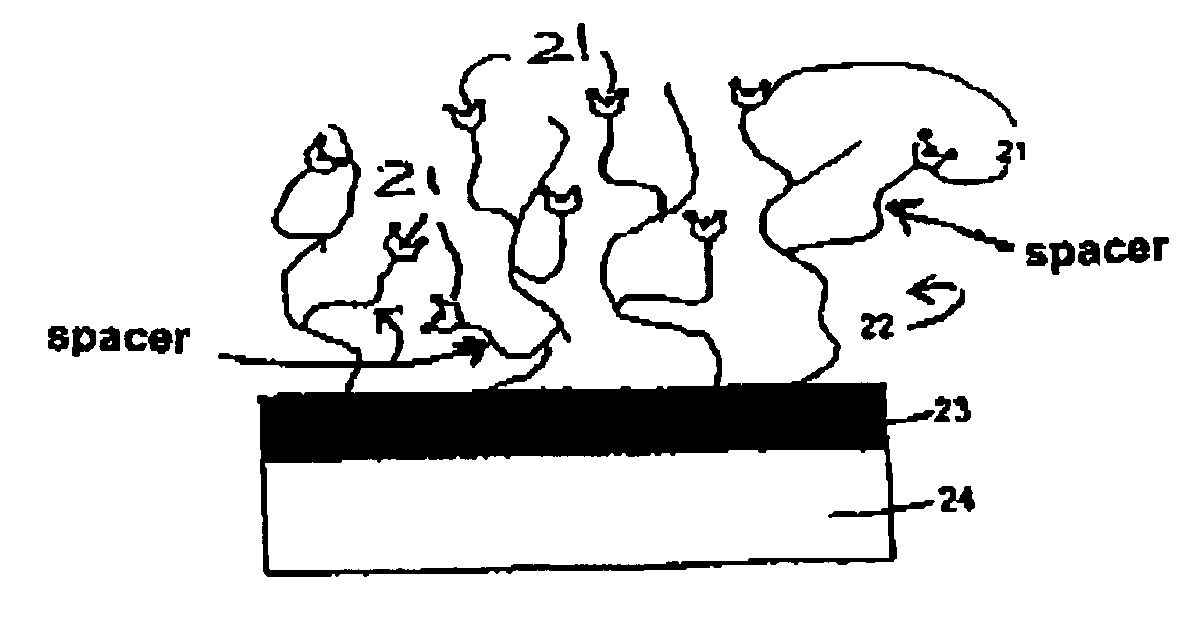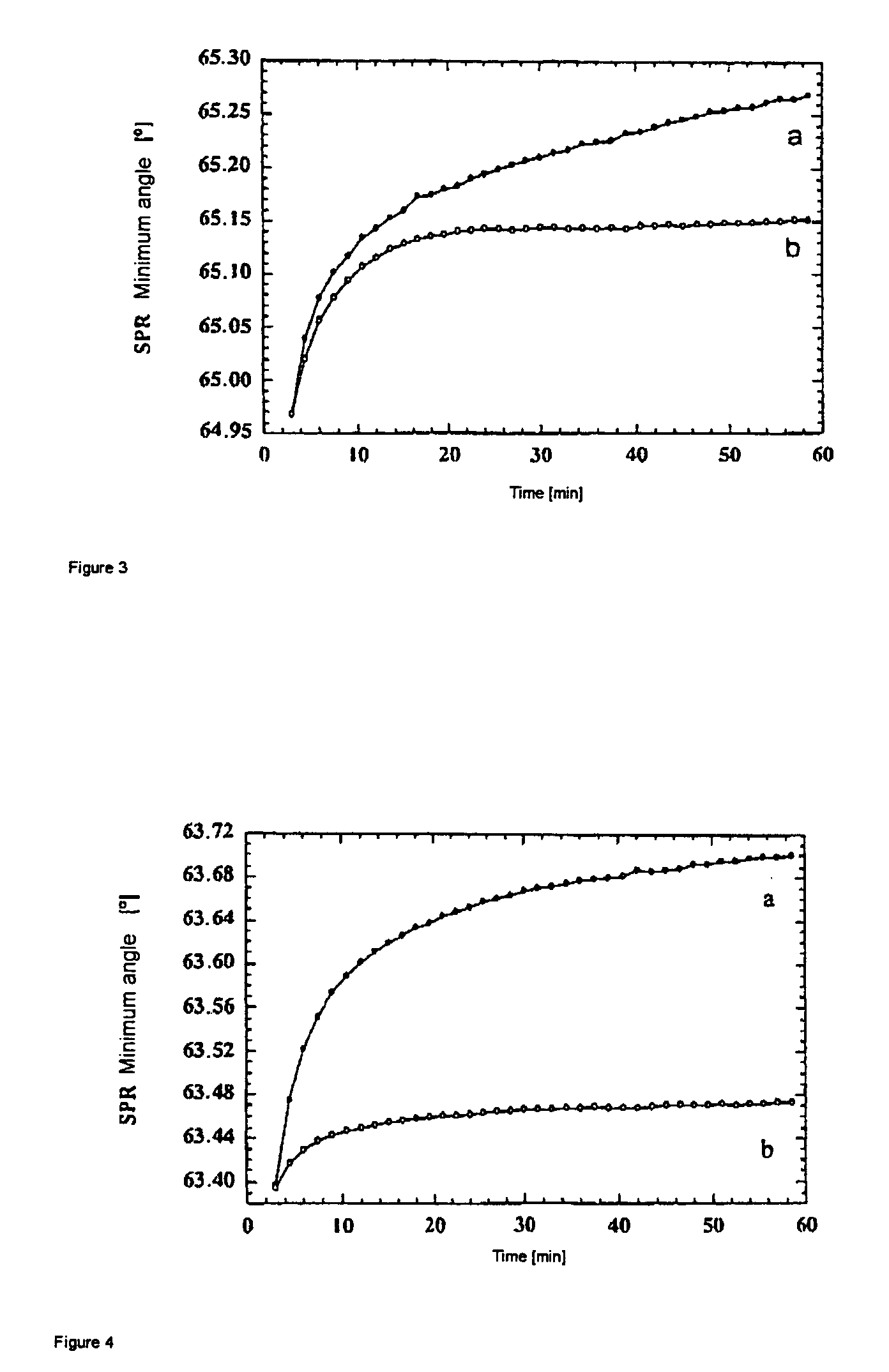Surfaces comprising a hydrophilic spacer, covalently bonded to hydrogels
a hydrophilic spacer and hydrogel technology, applied in the field of optical biosensors, can solve the problems of unpredictable spatial position of binding, and achieve the effects of improving binding behavior, increasing flexibility, and improving accessibility
- Summary
- Abstract
- Description
- Claims
- Application Information
AI Technical Summary
Benefits of technology
Problems solved by technology
Method used
Image
Examples
example
[0040]In order to illustrate the effect of the longer spacer, two sensors are produced for surface plasmon resonance. The sensor according to the invention has the structure described in the first exemplary embodiment. A sensor with a short spacer is used as a comparative example:
[0041]
[0042]Lysozyme is used as the receptor in both sensors, and a single-chained fragment of a corresponding antibody (HyHel 10 antibody) is used as the ligand.
[0043]A glass substrate with a gold surface is first put into an aqueous 2·10−2 mol·l−1 cysteaminium hydrochloride solution for 12 h. The substrate is then washed with ultrapure water, incubated for 5 min with 1 N NaOH and washed again with ultrapure water. An incubation solution is prepared by respectively mixing an aqueous 5·10−2 mol·l−1 polyacrylic acid solution (molecular weight 30,000) with solutions of 3.19 mg EDC and 4.115 mg NHS, each in 1 ml of ultrapure water. The substrate is incubated in this solution for 1 h and then washed with ultrap...
PUM
| Property | Measurement | Unit |
|---|---|---|
| thickness | aaaaa | aaaaa |
| refractive index | aaaaa | aaaaa |
| refractive index | aaaaa | aaaaa |
Abstract
Description
Claims
Application Information
 Login to View More
Login to View More - R&D
- Intellectual Property
- Life Sciences
- Materials
- Tech Scout
- Unparalleled Data Quality
- Higher Quality Content
- 60% Fewer Hallucinations
Browse by: Latest US Patents, China's latest patents, Technical Efficacy Thesaurus, Application Domain, Technology Topic, Popular Technical Reports.
© 2025 PatSnap. All rights reserved.Legal|Privacy policy|Modern Slavery Act Transparency Statement|Sitemap|About US| Contact US: help@patsnap.com



